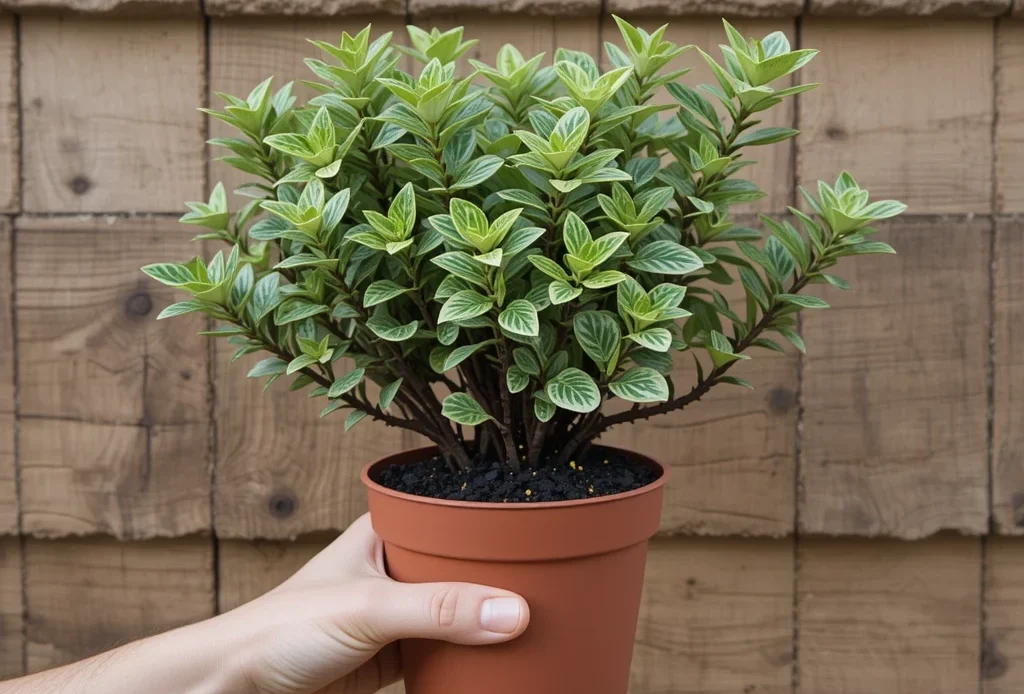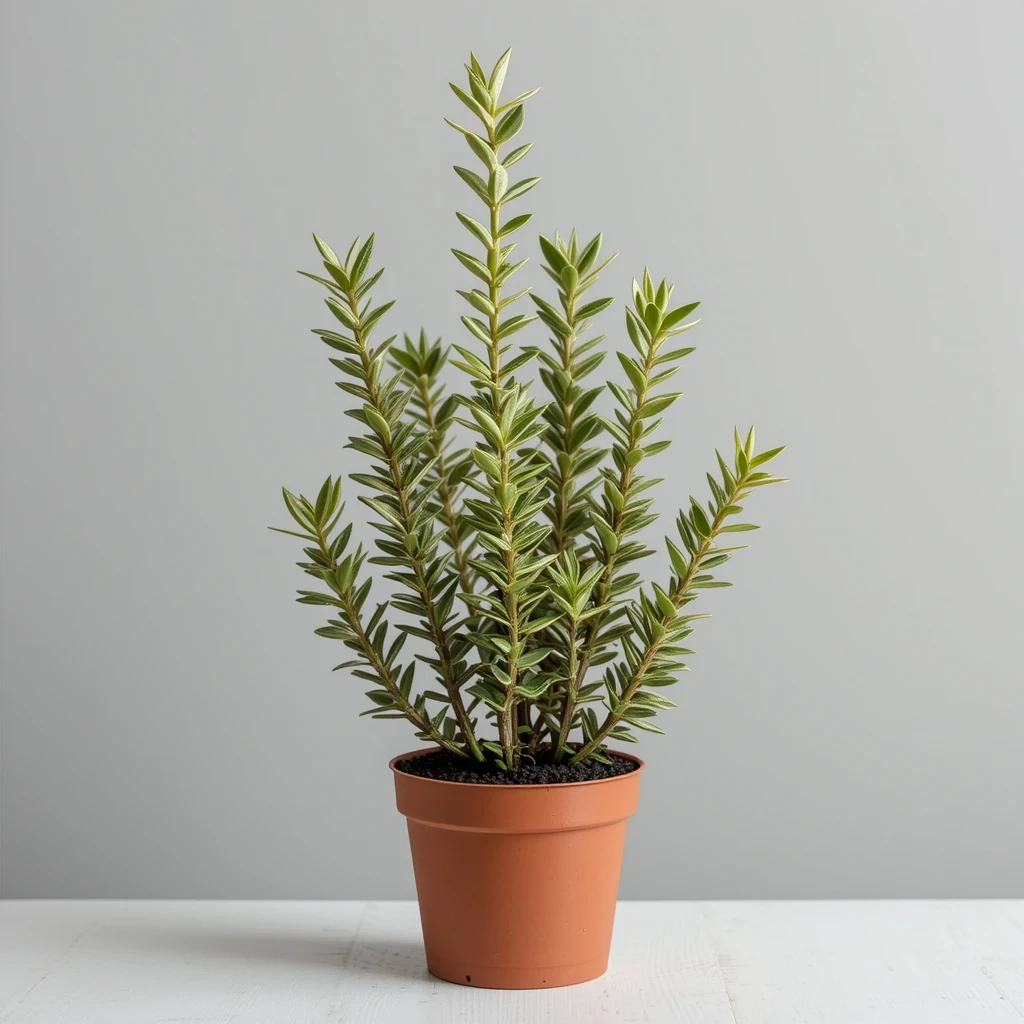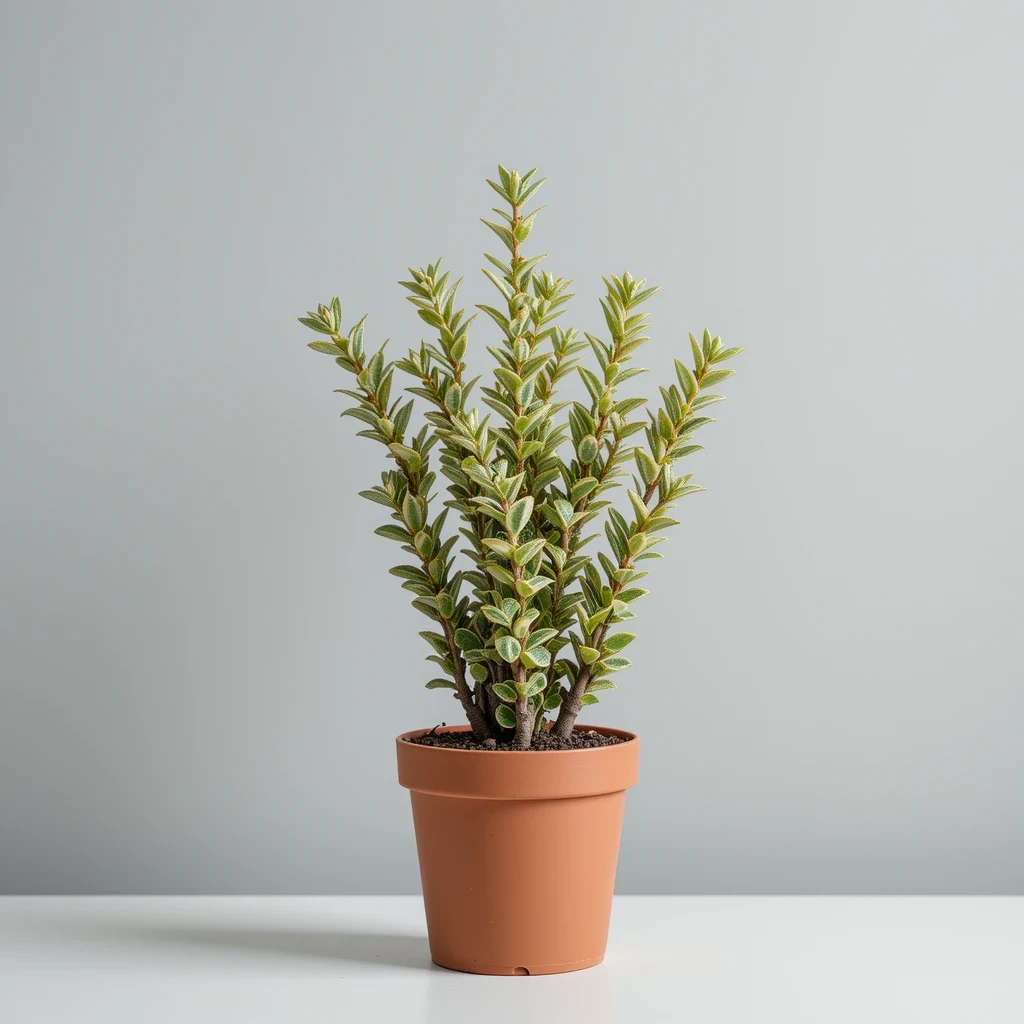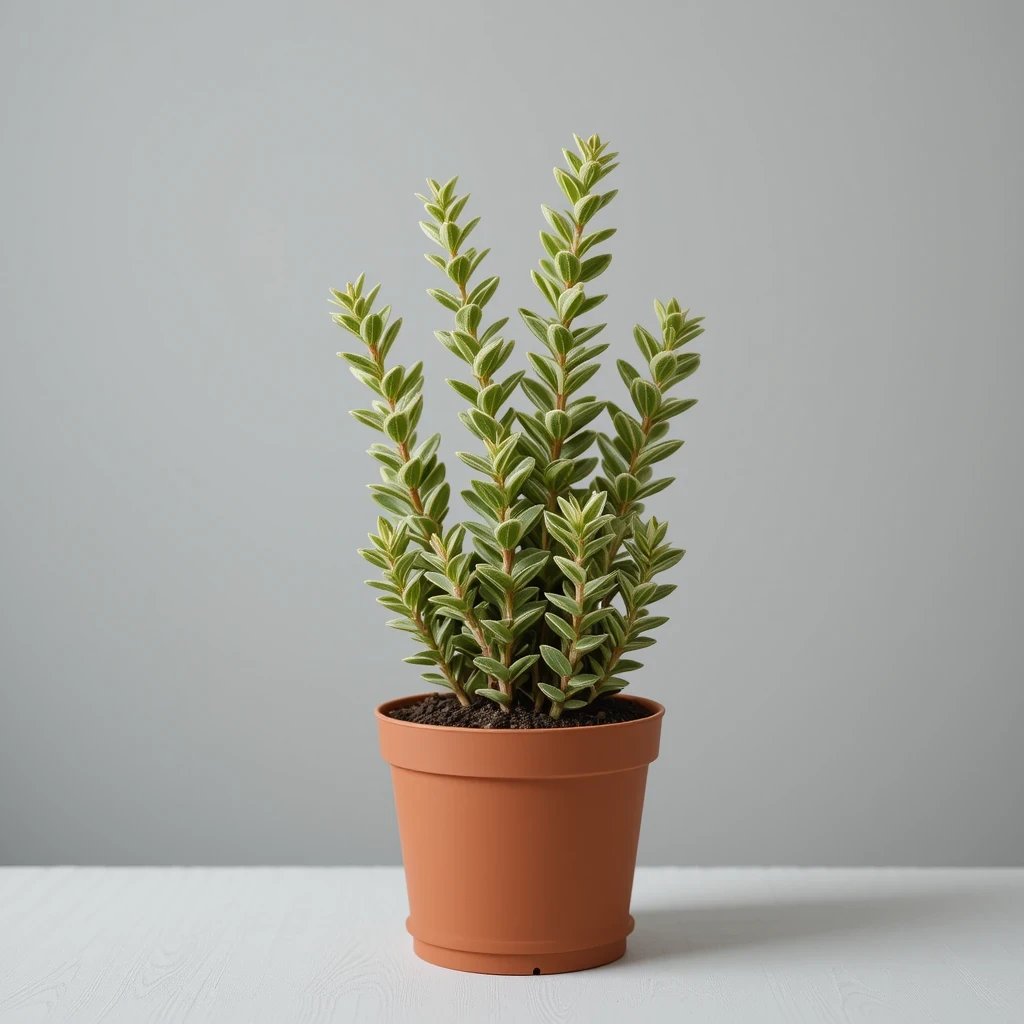
Meet the Persian Lady Slipper and Devil’s Backbone—two plants with names as intriguing as their appearances. These botanical wonders are more than just a pretty face; they’re a conversation starter, a touch of elegance, and a splash of tropical charm for your home. Whether you’re a seasoned plant parent or a budding enthusiast, these plants promise to bring a little drama and a lot of personality to your indoor jungle.
But what makes them so special? Let’s start with their origins. Both hail from the fascinating world of the Pedilanthus genus, known for its quirky, zig-zagging stems and vibrant foliage. While Persian Lady Slipper enchants with its delicate, slipper-shaped bracts, the Devil’s Backbone adds a bold, structural flair with its dramatic, spine-like growth. Together, they’re a botanical duo that’s hard to ignore.
And here’s the best part: not only are these plants eye-catching, but they’re also surprisingly low-maintenance—perfect for those of us who want maximum impact with minimal effort. Want to know how to keep these beauties thriving? Or maybe you’re curious about their history, care tips, or propagation secrets? Continue reading to discover all the exciting details that await you!

Distinguishing Persian Lady Slipper from Devil’s Backbone
Like siblings with distinct personalities, the Persian Lady Slipper and Devil’s Backbone share a botanical lineage but shine in their own unique ways. Understanding what sets them apart—and what brings them together—can help you appreciate their charm and care for them with confidence. Let’s explore the delightful contrasts and surprising similarities between these two striking plants.
Key Differences in Appearance, Growth Habits, and Requirements
The Persian Lady Slipper boasts delicate, slipper-shaped blooms in soft hues, making it a refined and elegant addition to your plant collection. In contrast, the Devil’s Backbone flaunts zig-zagging stems and vibrant foliage, creating a bold, architectural statement. While Persian Lady Slipper prefers a bit more shade, Devil’s Backbone thrives in bright, indirect light. Their watering needs differ, too, with Persian Lady Slipper leaning toward consistent moisture and Devil’s Backbone tolerating drier conditions. These nuances make them equally captivating yet uniquely suited to different plant parents’ preferences.
Similarities That Make Them Appealing as Houseplants
Despite their differences, these plants share a few irresistible qualities. Both are relatively low-maintenance and adaptable, thriving indoors with minimal fuss. They’re also excellent conversation pieces, thanks to their unusual shapes and vibrant colors. Their tropical origins give them a flair for brightening up spaces, while their resilience makes them forgiving to occasional neglect. Add to this their potential air-purifying qualities, and it’s clear why they’re favorites among houseplant enthusiasts.

Essential Care Tips for Persian Lady Slipper and Devil’s Backbone
Caring for the Persian Lady Slipper and Devil’s Backbone is like unlocking the secrets to their vibrant personalities—rewarding and full of surprises. With the right balance of light, water, and a little love, these plants can thrive indoors and bring a touch of tropical charm to your space. Let’s dive into the essential care tips that will keep these botanical beauties happy and healthy.
Light Requirements: Ideal Light Conditions for Healthy Growth
Both plants love bright, indirect light, where their foliage can shine without the risk of scorching. A sunny windowsill with filtered light is perfect for Persian Lady Slipper’s soft elegance, while Devil’s Backbone appreciates a bit more sun to enhance its vibrant hues. Avoid placing them in low light, as they’ll lose their luster and growth may slow. In situations where natural light is limited, it may be beneficial to use a grow light as an additional source of illumination. With the right illumination, these plants will thrive and dazzle all year long.
Watering Needs: Balancing Moisture and Avoiding Overwatering
Persian Lady Slipper enjoys evenly moist soil, preferring a consistent but gentle watering routine. Devil’s Backbone, on the other hand, is more forgiving and thrives on the “less is more” principle, tolerating occasional dryness between waterings. Overwatering is the quickest way to upset either plant, so let the top inch of soil dry out before reaching for the watering can. Use pots with drainage holes to prevent waterlogging. A careful balance will keep their roots happy and their leaves lush.
Soil Preferences: Best Soil Types and Drainage Tips
Both plants appreciate a well-draining soil mix, but their preferences differ slightly. Persian Lady Slipper thrives in a rich, loamy mix with excellent moisture retention, while Devil’s Backbone prefers a gritty, cactus-friendly blend. Adding perlite or sand can improve aeration for either plant. Avoid heavy, compact soils that retain too much water, as this can lead to root rot. Think light, airy, and nutrient-rich, and your plants will reward you with robust growth.
Temperature and Humidity: Optimal Conditions for Thriving Indoors
These tropical beauties love warm temperatures, ideally between 65°F and 80°F. Avoid drafts or sudden temperature changes, as both plants are sensitive to cold. While Persian Lady Slipper appreciates moderate humidity, Devil’s Backbone can tolerate drier conditions, making it a bit more versatile. A room humidifier or occasional misting can help recreate their native environment. Keeping the climate cozy ensures their vibrant foliage stays lush and radiant.
Fertilization Tips: Feeding Schedules and Nutrient Needs
Feed your Persian Lady Slipper monthly with a balanced liquid fertilizer during its growing season for optimal blooms. Devil’s Backbone benefits from a similar feeding routine but can tolerate less frequent applications. Avoid over-fertilizing, as this can lead to salt buildup and stress the plant. During winter, reduce feeding to let them rest. A steady supply of nutrients will keep them vibrant and growing strong.

Growing Persian Lady Slipper and Devil’s Backbone Indoors
Imagine turning your home into a mini botanical paradise where Persian Lady Slipper and Devil’s Backbone reign supreme. These quirky, personality-filled plants are like the celebrities of the plant world—they demand just the right setup, but once they’re happy, they’ll steal the show. With the perfect containers, some clever tricks for indoor care, and a little flexibility through the seasons, you’ll have these beauties thriving and turning heads in no time.
Choosing the Right Containers and Positioning
Think of choosing a pot for these plants like picking the perfect outfit—functional, stylish, and just the right fit. Persian Lady Slipper loves a snug pot that cradles its roots, while Devil’s Backbone prefers a bit of elbow room for its dramatic stems. Drainage holes are non-negotiable; nobody likes soggy feet, and your plants are no exception. Place the Persian Lady Slipper in a spot where its delicate blooms can be the star of the show, and let the Devil’s Backbone claim a bold, well-lit corner. They’ll look like they were born to be there (and technically, they were).
Adapting Care Routines to Indoor Environments
Indoor living isn’t just for people—it’s a lifestyle for your plants too! Persian Lady Slipper adores a little extra TLC, like a spritz of mist to keep it feeling fresh and tropical. Devil’s Backbone, on the other hand, is more of a “set it and forget it” type—just don’t completely ghost it. Keep an eye on how indoor heating or air conditioning dries things out, and adjust your watering schedule accordingly. If you treat these plants like the divas they are, they’ll repay you by looking fabulous.
Managing Seasonal Changes and Light Fluctuations
Seasonal changes can feel like a rollercoaster for your plants, but don’t worry—they’re adaptable with the right support. When winter steals the sunlight, move Persian Lady Slipper closer to a bright window or give it a VIP pass to a grow light. Devil’s Backbone won’t complain about a front-row seat to the sun, either. Remember to ease up on watering during their off-season—no one likes to be overwatered during hibernation! Come spring, they’ll be ready to bounce back and shine brighter than ever.
Propagation Techniques for Persian Lady Slipper and Devil’s Backbone
There’s something magical about creating new life from an existing plant, and Persian Lady Slipper and Devil’s Backbone make this process surprisingly rewarding. Whether you’re working with the charming Persian Lady Slipper, the architectural Euphorbia Devil’s Backbone, or the versatile Mother of Thousands, propagation is your chance to grow your collection and share these beauties with others. Let’s dive into the secrets of turning a simple cutting into a thriving new plant.
Step-by-Step Guide to Propagating Through Cuttings
Ready to grow your own Euphorbia Devil’s Backbone or Persian Lady Slipper? Start by snipping a healthy, 4-6 inch section from a mature stem using clean, sharp shears. Let the cutting dry for a day to seal the cut and prevent rot—an essential step for Euphorbia tithymaloides. Once dried, plant it in a well-draining soil mix and give it a gentle watering. Place the pot in a warm, bright spot, and wait for the magic as roots begin to develop. Patience pays off when it comes to propagation!
Tips for Successful Rooting and Transplanting
The secret to successful rooting lies in creating the perfect environment. Keep the soil lightly moist but not soggy—nobody likes wet feet, not even Euphorbia Devil’s Backbone. For Persian Lady Slipper, consider using a rooting hormone to boost your chances of success. Once roots are 2-3 inches long, it’s time to transplant into a slightly larger pot. Be gentle during the move to avoid shocking the plant. Treat your new plant like royalty, and it’ll settle in happily.
Common Mistakes to Avoid During Propagation
Even the most enthusiastic plant lovers can stumble during propagation. Avoid overwatering your cuttings, as excess moisture can lead to rot instead of roots. Forgetting to let Euphorbia tithymaloides cuttings dry before planting is another common pitfall—skipping this step can be a death sentence. Don’t rush the process; roots take time to grow, so resist the urge to poke and prod. Finally, avoid planting in dense soil—it needs to breathe! A little care and attention go a long way in growing Persian Lady Slipper and Euphorbia Devil’s Backbone successfully.

Long-Term Maintenance and Troubleshooting
Caring for Persian Lady Slipper, Euphorbia Devil’s Backbone, and the resilient Mother of Thousands is an ongoing journey of love and learning. These plants reward attentive care with vibrant growth and stunning displays, but even the best plants can encounter a few hiccups along the way. By mastering pruning techniques, staying vigilant against pests, and learning how to nurse struggling plants back to health, you’ll ensure your Euphorbia tithymaloides thrives for years to come.
Pruning Tips for Healthy and Attractive Plants
Think of pruning as a little spa day for your Persian Lady Slipper and Euphorbia Devil’s Backbone. Trim away leggy or damaged stems to encourage fuller, healthier growth—especially for the zig-zagging Euphorbia tithymaloides. Use clean, sharp scissors and cut just above a node to stimulate new shoots. For Mother of Thousands, remove baby plantlets that crowd the base to give the parent plant more breathing room. Regular pruning not only keeps your plants looking their best but also helps prevent disease.
Identifying and Addressing Common Pests and Diseases
Even the most well-cared-for plants can face unwelcome guests like spider mites, mealybugs, or aphids. Keep a close eye on your Persian Lady Slipper and Euphorbia Devil’s Backbone for signs of infestation, such as sticky residue or yellowing leaves. A quick wipe with a damp cloth or a gentle spray of insecticidal soap can usually do the trick. Watch for root rot in Euphorbia tithymaloides caused by overwatering, and treat fungal issues by improving airflow. Stay proactive, and your plants will stay pest-free.
Reviving Struggling Plants
If your beloved Persian Lady Slipper or Euphorbia Devil’s Backbone starts to look a little sad, don’t despair—most plants are surprisingly resilient. For overwatered Euphorbia tithym

Why Persian Lady Slipper and Devil’s Backbone Are Perfect for Your Home
Few plants can rival the charm and versatility of Persian Lady Slipper and Euphorbia Devil’s Backbone. From their striking appearances to their effortless care routines, these plants effortlessly blend style and practicality. Whether you’re a seasoned plant parent or just dipping your toes into gardening, Persian Lady Slipper, Euphorbia tithymaloides, and even the hardy Mother of Thousands bring beauty, ease, and benefits that make them ideal houseplants.
Benefits as Decorative Houseplants
With their unique forms and bold personalities, Persian Lady Slipper and Euphorbia Devil’s Backbone are living works of art. The Persian Lady Slipper’s elegant blooms create a soft, romantic vibe, while the Euphorbia tithymaloides’ zig-zagging stems add architectural drama to any space. They thrive in decorative containers, making them perfect for brightening shelves, desks, or windowsills. Their exotic looks ensure they’ll be the center of attention in your home. Whether alone or paired with other plants, they bring a fresh, dynamic energy to your décor.
Low-Maintenance Appeal for Beginner Gardeners
Not all houseplants demand hours of care, and Persian Lady Slipper and Euphorbia Devil’s Backbone are proof. Euphorbia tithymaloides is a survivor, tolerating dry spells and bouncing back from occasional neglect, making it ideal for busy plant parents. Persian Lady Slipper is just as forgiving with its simple watering and light needs. Even the Mother of Thousands lives up to its name, growing and propagating easily without fuss. These plants are perfect for anyone looking to enjoy greenery without a steep learning curve.
Air-Purifying Qualities and Other Perks
Beyond their visual appeal, these plants work hard to improve your home environment. Persian Lady Slipper and Euphorbia Devil’s Backbone help filter indoor air, reducing toxins and boosting overall air quality. They’re also conversation starters, bringing a touch of the exotic to your home. Their adaptability means they can thrive in various conditions, and their easy propagation, especially for Mother of Thousands, means you can share their beauty with friends and family. These plants truly offer more than meets the eye!
Conclusion
Bringing Persian Lady Slipper, Euphorbia Devil’s Backbone, and even the resilient Mother of Thousands into your home is more than just adding plants to your space—it’s about creating a vibrant, living masterpiece that uplifts your environment. These unique plants offer a stunning mix of beauty, resilience, and charm, whether you’re a seasoned green thumb or just starting your plant journey.
From their eye-catching forms to their air-purifying benefits, they make a lasting impact on both your home’s aesthetics and your well-being. Plus, with the knowledge you’ve gained about their care, propagation, and maintenance, you’re well-equipped to help these beauties thrive for years to come.
So go ahead—choose your favorite, find the perfect spot, and let these incredible plants bring joy, elegance, and a little botanical magic into your life. Happy growing!
FAQ
Can Devil’s Backbone thrive indoors?
Yes, Devil’s Backbone can thrive indoors with proper care. It prefers bright, indirect light and a warm environment, making it well-suited for indoor spaces. Ensure the pot has good drainage to prevent root rot and maintain healthy growth.
What advantages does the Devil’s Backbone plant offer?
Devil’s Backbone is known for its striking appearance and low maintenance, making it an excellent choice for indoor decor. It also purifies the air and is a resilient plant that can tolerate periods of neglect, making it ideal for busy or beginner gardeners.
Does Devil’s Backbone thrive better in sunlight or shade?
Devil’s Backbone thrives in bright, indirect sunlight but can tolerate some direct sunlight. However, it should be protected from intense midday sun, which can scorch its leaves. Insufficient light can lead to elongated, frail growth.
How frequently should I water my Devil’s Backbone?
Water Devil’s Backbone when the top inch of soil feels dry to the touch. Exercise caution with watering, as excessive moisture can result in root rot.. In winter, it is advisable to decrease watering since the plant’s growth rate diminishes.
Why are the leaves of my Devil’s Backbone turning pink?
Pink leaves can indicate a stress response to environmental factors such as too much direct sunlight or fluctuating temperatures. It may also be a natural reaction to aging leaves or a nutrient deficiency. Ensure proper care by adjusting light exposure and checking soil conditions.
Check out our latest article for more insights, and follow us on Facebook for updates! and connect with us on Instagram, Pinterest, and YouTube for more inspiration!
By : Mark


